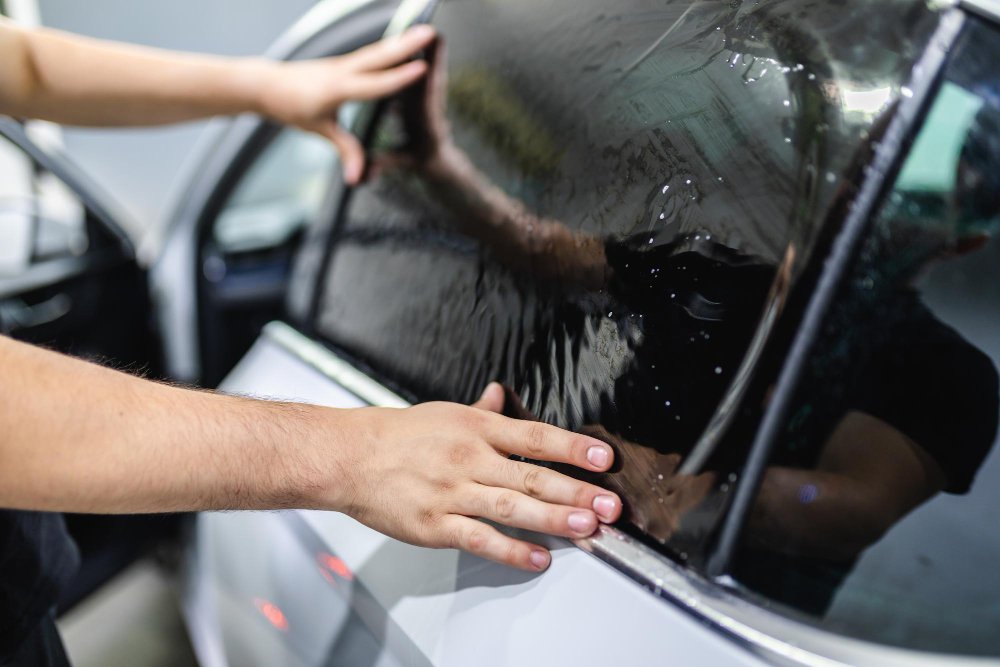Discover the Perks of UV Defense with Vehicle Window Tinting
Discover the Perks of UV Defense with Vehicle Window Tinting
Blog Article
Window Tinting Laws and Guidelines: What You Need to Know Prior To Tinting Your Car
Prior to continuing with window tinting for your automobile, it is essential to familiarize yourself with the diverse regulations and guidelines that regulate this practice throughout various states. These laws determine the allowable levels of tint darkness, often gauged by noticeable light transmission (VLT) percentages, and include details stipulations for front windscreens intended at guaranteeing road security.
Review of Home Window Tinting Laws
Window tinting laws are regularly subject to variation throughout various territories, reflecting neighborhood regulations and security considerations. These legislations dictate the permissible levels of color darkness and reflectiveness on automobile home windows, guaranteeing that vehicle drivers keep ample visibility while likewise securing versus dangerous UV rays and warm.
A lot of guidelines classify home window tinting based upon the Visible Light Transmission (VLT) percentage, which indicates the amount of light that can pass via the window. Usually, reduced VLT portions represent darker colors. Legislations commonly set apart in between the front, side, and back windows, with more stringent constraints used to the front windscreen to improve safety and security for both the driver and other roadway individuals.
Compliance with home window tinting regulations is vital, as violations can result in penalties, required removal of the tint, and potential rises in insurance premiums. It is important for vehicle proprietors to acquaint themselves with local regulations before continuing with home window tinting installments.
State-by-State Color Rules
Comprehending the details home window tinting policies in each state is important for lorry owners looking for to abide with the law. Each state in the united state has developed its own collection of rules controling home window tinting, which can vary significantly. These regulations frequently dictate the allowable degrees of tint darkness, the sorts of windows that can be tinted, and any clinical exceptions that might use.
For example, states like The golden state have strict constraints on tint darkness for front windows, while others, such as New Mexico, might enable darker colors. In addition, specific states mandate specific exposure percents for numerous home windows, including the windshield, front side windows, and rear windows. It is crucial for vehicle proprietors to familiarize themselves with their state's legislations to prevent prospective fines or fines.
In addition, some states may call for a qualification sticker label to be positioned on tinted home windows, suggesting conformity with state regulations. Failure to follow these policies not only risks lawful effects however can additionally impact safety and security and visibility while driving. Lorry owners ought to carry out comprehensive research study or consult neighborhood authorities to make certain full understanding and conformity with state-by-state tint regulations.
Allowed Color Types and levels
Numerous lorry proprietors may be stunned to discover that enabled color degrees and kinds vary extensively throughout different states. Each state has actually established its very own guidelines concerning the acceptable darkness and reflectivity of window tint, commonly determined by Visible Light Transmission (VLT) percentages. VLT refers to the quantity of light that can pass with the tinted home windows; therefore, a lower portion shows a darker color.

In addition, the kinds of tint materials enabled can differ, with some states restricting metallic or mirror-like finishes. It is crucial for vehicle owners to acquaint themselves with their state's particular legislations to ensure conformity. Non-compliance can result in penalties, obligatory removal of the tint, or other legal effects, making it imperative to comprehend these guidelines before waging installation.
Medical Exceptions for Tinting
While not all states provide allowances for medical exceptions relating to window tinting, those that do recognize the need for particular individuals to enhance exposure and convenience because of clinical conditions. Various clinical conditions, such as lupus, skin cancer, and certain eye problems, can make individuals specifically delicate to sunshine. Subsequently, these individuals may call for darker tints to protect themselves from dangerous UV rays and glare.

It is very important to note that even with a clinical exception, there might still be limitations on the degree of color allowed. Compliance with state laws ensures that people are both safeguarded and within legal limits. Those thinking about medical exemptions need to call their neighborhood Division of Electric motor Cars or comparable authority to comprehend the treatments and needs necessary to obtain an exemption properly.
Charges for Non-Compliance
Falling short to conform with window tinting regulations can Visit Website cause significant fines, which differ by state. Legislation enforcement companies are equipped to provide citations for lorries that do not abide by the defined tinting policies. These penalties typically consist of penalties, which can vary from modest total up to numerous hundred dollars, relying on the seriousness of the offense and the state concerned.
In some territories, repeated offenses might result in rising penalties or additional penalties, such as necessary court great site looks. Non-compliance may demand the removal of unlawful tinting, frequently at the proprietor's cost. In extreme cases, regular wrongdoers might encounter suspension of their car registration till compliance is accomplished.
Additionally, insurance coverage effects might arise from receiving multiple citations for home window color violations. Insurers may see such offenses as an indication of riskier habits, possibly bring about raised premiums or difficulty in protection.
To prevent these fines, it is critical for car owners to familiarize themselves with their neighborhood window tinting regulations and make certain that their vehicle complies (Window Tinting). This aggressive technique not just prevents legal ramifications yet likewise promotes roadway security
Final Thought

Most regulations categorize home window tinting based on the Visible Light Transmission (VLT) portion, which shows the amount of light that can pass via the home window. Compliance with window tinting regulations is crucial, as violations can result in fines, required elimination of the color, and potential increases in insurance policy premiums.Comprehending the particular window tinting regulations in each state is essential for car owners looking for to comply with the regulation. These policies usually dictate the allowable levels of tint darkness, the kinds of windows that can be tinted, and any medical exemptions that may apply.
For instance, states check it out like The golden state have strict limitations on color darkness for front home windows, while others, such as New Mexico, might enable darker tints.
Report this page